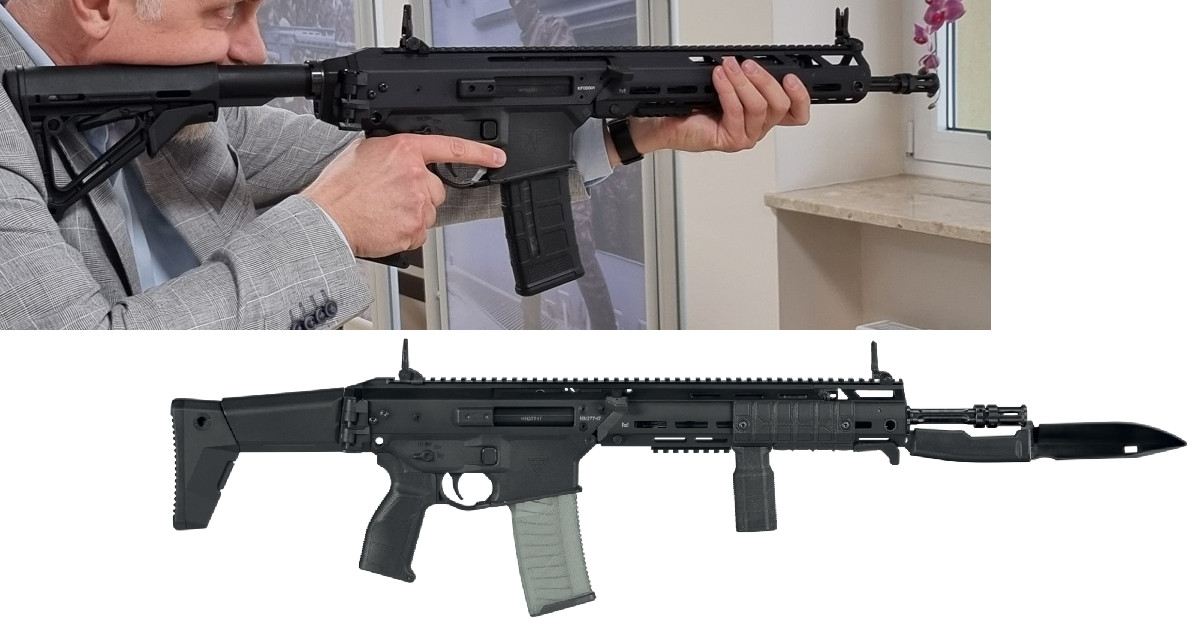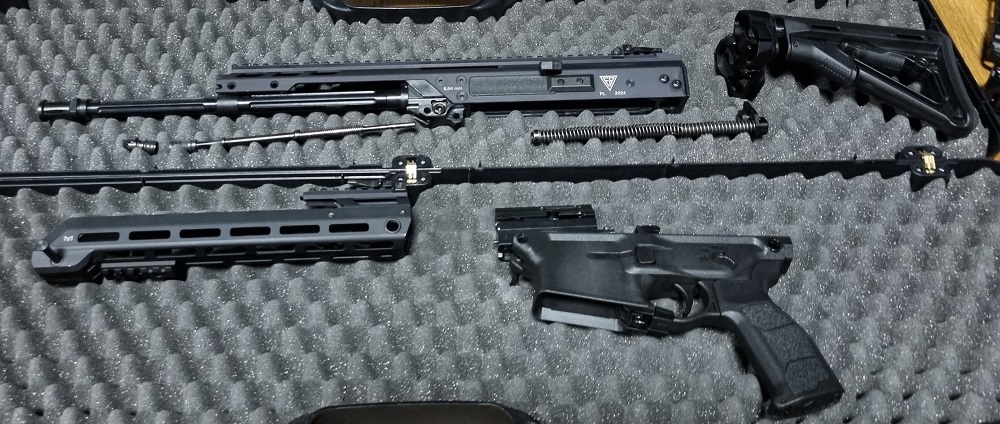Grot A3 rifle presented in Poland
24 June, 2024 Polish Grot A3 assault rifle. Photo credits: Remigiusz Wilk The Polish small arms manufacturer Lucznik has presented a new version of the Grot A3 assault rifle, which has received a number of improvements based on the experience of operation and the war in Ukraine.
This was reported by the Polish newspaper Gazeta Prawna. During the GROTowisko-24 conference, the Polish company Lucznik presented the updated MSBS-5.56 Grot carbine, which received a number of improvements based on the experience of using previous models in the Polish army and in Ukraine. The new carabine is not yet in service, so it is more of a view of the company's developers on further development, which affected both the appearance and internal components of the design.
 Grot A3 (top) and Grot A2 assault rifles
Grot A3 (top) and Grot A2 assault rifles
According to the slides shown at the presentation, the new rifle is 300 grams lighter than the A2 variant and now weighs 3.4 kilograms with a 16-inch (406-mm) barrel.
At the same time, it should be noted that the physical sample presented had a shorter barrel of 14.5 inches (368 mm), which was offered to the Polish army as a more practical alternative. As for the appearance and ergonomics of the rifle system, the appearance of a new telescopic stock, similar to those used on AR platforms, immediately catches the eye. It allows an increase in the range of extension by 30-50 mm and can still be tilted to the side.
Another notable change is the new slim profile forend, which should make it easier for the operator to grip the weapon. According to the developers, the new forend has a stiffer connection to the receiver, which should solve the old problem with backlash. The latter did not allow the proper use of mounted sights on this design.
Also, at the request of the military, the new rifle is now equipped with a detachable silencer (1/2-28 UNEF), which in previous versions was fixed and did not allow the installation of other modules. Also, due to the shorter barrel, the rifle no longer has a bayonet mount.
Internal changes
The Grot A3 has undergone significant changes to the design of the rifle itself. In particular, the designers have redesigned the gas piston and the spring and guide system, which should make the rifle easier to operate.
The A3 version also offers an updated bolt carrier. In the new design, it will be slightly raised upwards and the shape of the guide will be changed. This will reduce the risk of jams that can occur if dirt gets inside.
The developers have also worked on the powder gas removal system. They removed the drainage holes from which hot gasses were released into the shooter's hand. The gas regulator was also changed to include a latch that prevents accidental loss of this element.
The new unit also received an additional mode that will allow the system to be properly adjusted to work with a silencer.
 Polish Grot A3 assault rifle in semi-disassembled condition. Photo credits: Remigiusz Wilk
Polish Grot A3 assault rifle in semi-disassembled condition. Photo credits: Remigiusz Wilk
During the conference, an address to the participants signed by the Minister of National Defense Vladyslav Kosiniak-Kamysh was also read out.
It outlined the current findings on the use of the Grot A2. Attention was drawn to potential improvements, which included the introduction of better iron sights. The current folding sights were initially seen as auxiliary.
It was also proposed to strengthen the magazine by introducing metal elements that would increase their durability and ensure that the bolt carrier stops in the rear position every time all rounds are fired. In general, the updated version of the Polish assault rifle should incorporate all the positive and negative operational experience gained during seven years of operation and, in particular, two years of use in the war in Ukraine. The first production rifles of the A0 and A1 variants had a number of problems, including corrosion, poor quality of materials and their processing, materials not withstanding shock loads, and inability to operate when dusty.
The Polish rifle had "childhood diseases" that led to overheating when firing long bursts and breaking off accessories, including the stock.
However, despite all the shortcomings of the A0 and A1 rifles, the carbines transferred as part of the military aid received many positive reviews from the Ukrainian military.